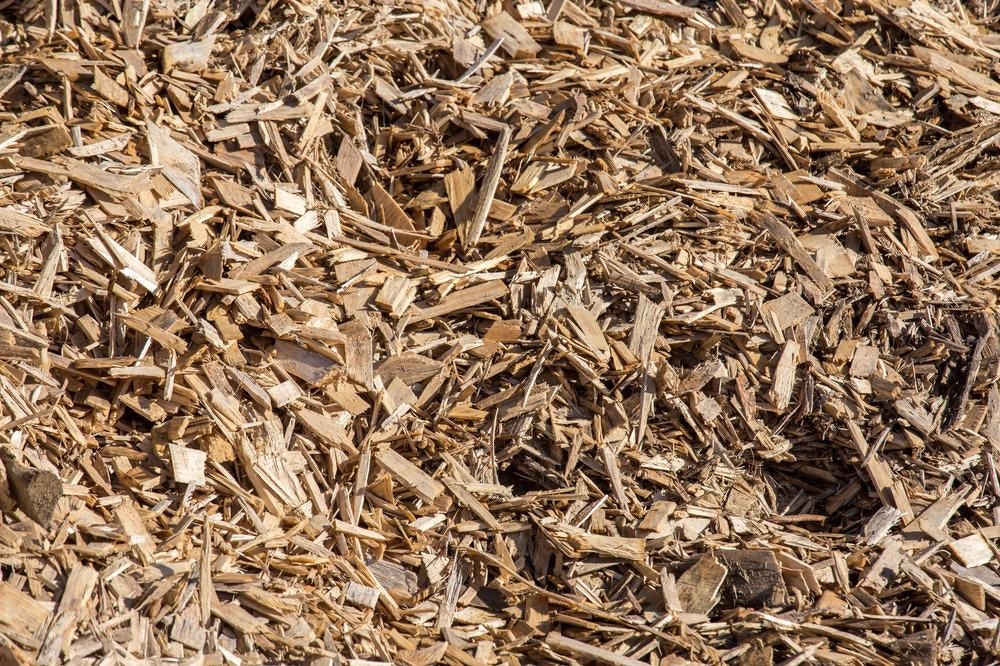Wood waste has continued to be undervalued as a resource. Now, Desktop Metal, a leader in the metal binder jetting production market, has launched Forust, a new company that uses volume additive manufacturing for the production of sustainable wood products from wood waste. The company is pioneering the reuse of wood waste, helping to boost the sustainability of wood even further.

Image Credit: pixinoo/Shutterstock.com
Wood is a much relied upon building material, particularly now, in a time when sustainability, environmental impact, and safety (in terms of impact on human health) are key focuses of the building industry.
Wood is preferred for its ease of reuse, and through sustainable forestry it is considered to be a green option as a building material.
Forust technology converts wood waste into new, unique, wood products.
Via the use of Desktop Metal’s patented single-pass binder jetting additive manufacturing technology, wood waste can be re-materialized.
The idea is that, rather than cutting down new trees to source wood material, wood waste is utilized instead, allowing more trees to remain in the forest, and enhancing the sustainability of using wood as a material.
Wood and Bioresin 3D printed to Produce Products Indistinguishable from Conventional Wood
Materials produced by Forust are similar to conventional wood materials in functionality and strength due to the combination of wood waste alongside bioresins as an input into the additive manufacturing (3D printing) process.
Materials can even be produced to include the various grain textures found in natural wood.
How Do They Create 3D Printed Products Using End-Use Wood Parts?
Using Desktop Metal’s high-speed 3D printing technology, byproducts from the wood manufacturing industry (e.g., cellulose dust) and those from the paper industry (lignin) are combined with bioresins and converted into new, functional wood parts via high-speed 3D printing.
As a result, architects, designers, and manufacturers are offered a new route to obtaining custom wood pieces for various purposes.
The use of 3D printed up-cycled wood offers users the opportunity to produce projects with a superior environmental footprint, as well as the chance to create geometries unattainable with conventional (subtractive) wood manufacturing technology.
Because of the additive nature of the production process, designers have more freedom with the shapes and designs they can create.
What are the Advantages of the Properties of Materials Produced by Forust?
As well as matching the strength and functionality of conventional wood materials, and offering designers the chance to create new geometries not possible with conventional subtractive manufacturing, Forust’s materials also offer the benefits of reducing deforestation and providing a low-cost alternative to materials whose production process is damaging to the environment.
The method of converting waste products into high-quality materials could help industries move towards sustainable processes simply by switching their source materials.
Uses of Forust Regenerated Wood
The applications of Forust are numerous, from mass-producing everyday items to crafting batches of high-end, architectural pieces.
Forust: Building a greener future through 3D printed wood
Video Credit: Desktop Metal/Youtube.com
In particular, Forust can create bespoke products, allowing designers to come to them with designs that could not be created with traditional, subtractive manufacturing processes.
Forust has been used on a wide range of products, including luxury car interiors, consumer goods, architecture, and furniture.
It can be used to produce materials of a range of densities, colors, mechanical properties, and morphologies.
Experts estimate that the global finished woods products market will reach $1.8 trillion by 2027.
It is likely that sustainable producers, such as Forust, will begin to take a sizable chunk of the market given the increasing demand for sustainable materials.
Forust wood can be used in almost any situation that conventional wood would be used in, opening it up to a wide range of potential applications.
Currently, Forust is working on creating a batch of products for Swiss industrial designer, Yves Béhar, demonstrating the ability of Forust’s process to craft intricate and unique design pieces.
Current Challenges Facing Wood Regeneration with Additive Manufacturing
While 3D printing has been around since the 1980s, it has only been in recent years that its potential applications have begun to be fully explored and developed.
Therefore, new applications of 3D printing, such as its use in regenerating waste wood into new materials, are still in their infancy.
It is inevitable the processes will continue to be enhanced as the process becomes more established and it used for a greater number of purposes.
Future Directions for Wood Waste 3D Printing
Forust can cope with manufacturing in batches and on the scale of mass production.
It can create bespoke designs as well as cater to clients who require custom, 3D-printed wood products at volume.
This has led to Forust’s wood waste 3D printing to already be utilized by a number of industries, from architecture and design to consumer products and automotive.
As the technology continues to evolve, it is likely that more industries will leverage this technology to produce items that perhaps were not previously possible with conventional wood.
Sources:
Davide Sher. (2021). Desktop Metal launches Forust for volume AM production of sustainable wood products. [Online]. 3D Printing Media Network. Available at: https://www.3dprintingmedia.network/desktop-metal-launches-forust-additive-manufacturing-process-for-am-wood-products/ (Accessed 6 October 2021)
Kubi Sertoglu. (2021). Desktop Metal redefines woodworking with new wood 3D printing technology. [Online]. 3D Printing Industry. Available at: https://3dprintingindustry.com/news/desktop-metal-redefines-woodworking-with-new-wood-3d-printing-technology-189752/ (Accessed 6 October 2021)
Laleicke, P. (2018). Wood waste, the challenges of communication and innovation. [Online]. Bio Resources. Available at: https://bioresources.cnr.ncsu.edu/resources/wood-waste-the-challenges-of-communication-and-innovation/ (Accessed 6 October 2021)
Our technology. [Online]. Forust. Available at: https://www.forust.com/technology (Accessed 6 October 2021)
Disclaimer: The views expressed here are those of the author expressed in their private capacity and do not necessarily represent the views of AZoM.com Limited T/A AZoNetwork the owner and operator of this website. This disclaimer forms part of the Terms and conditions of use of this website.